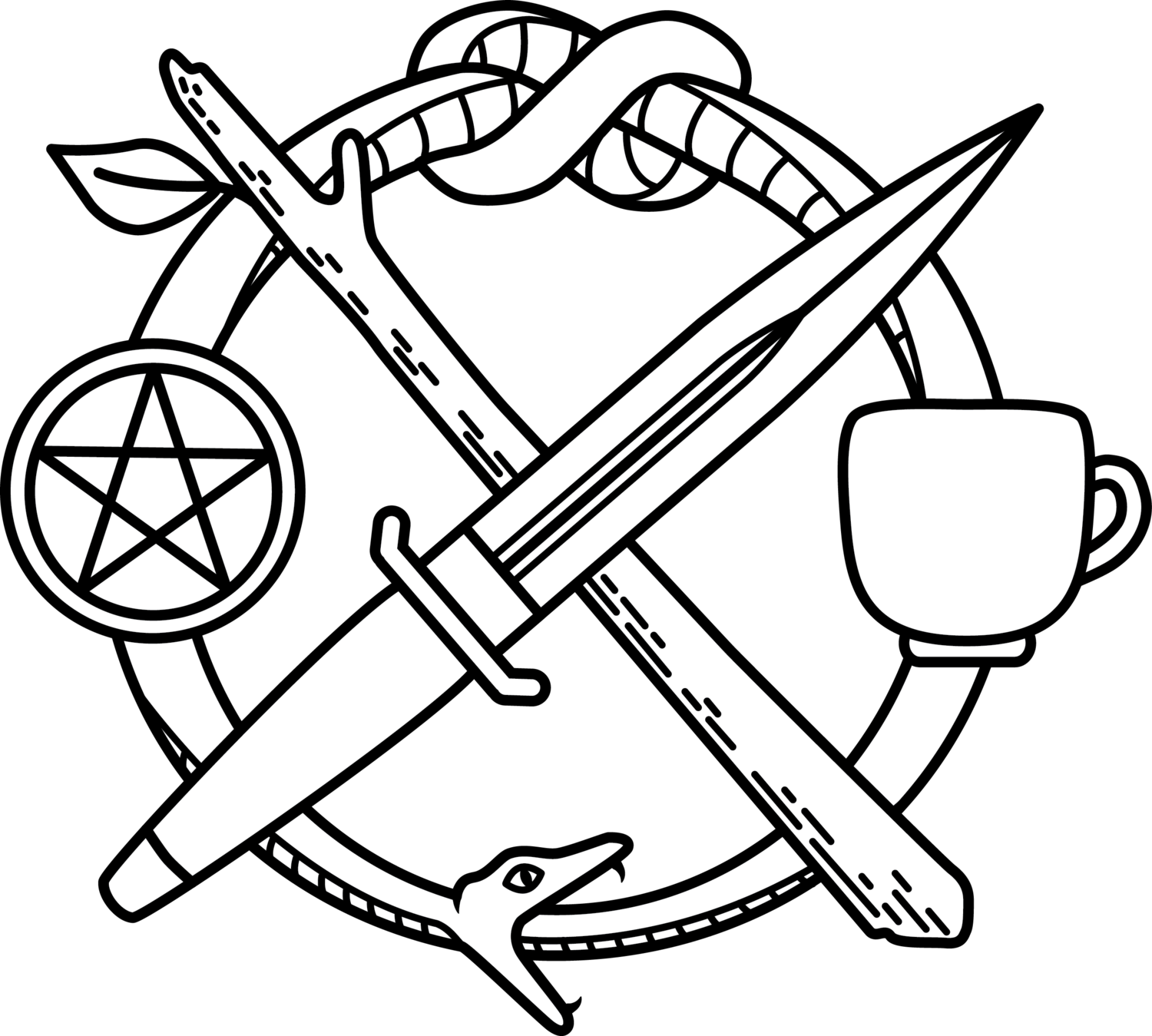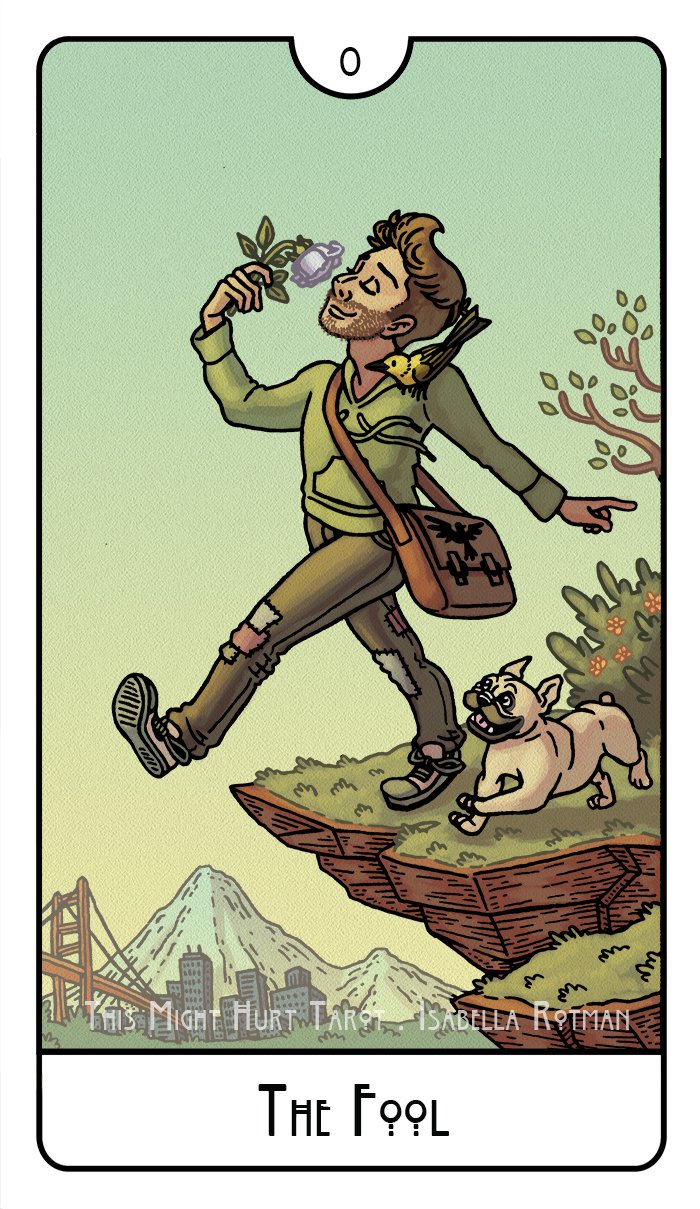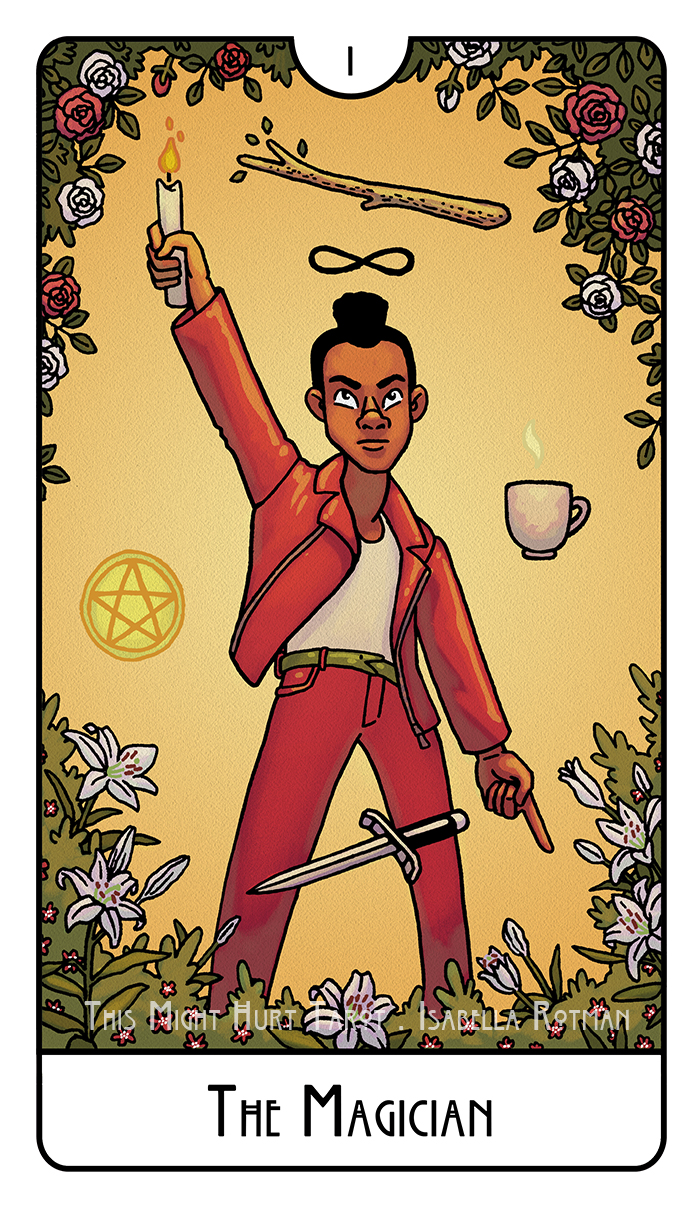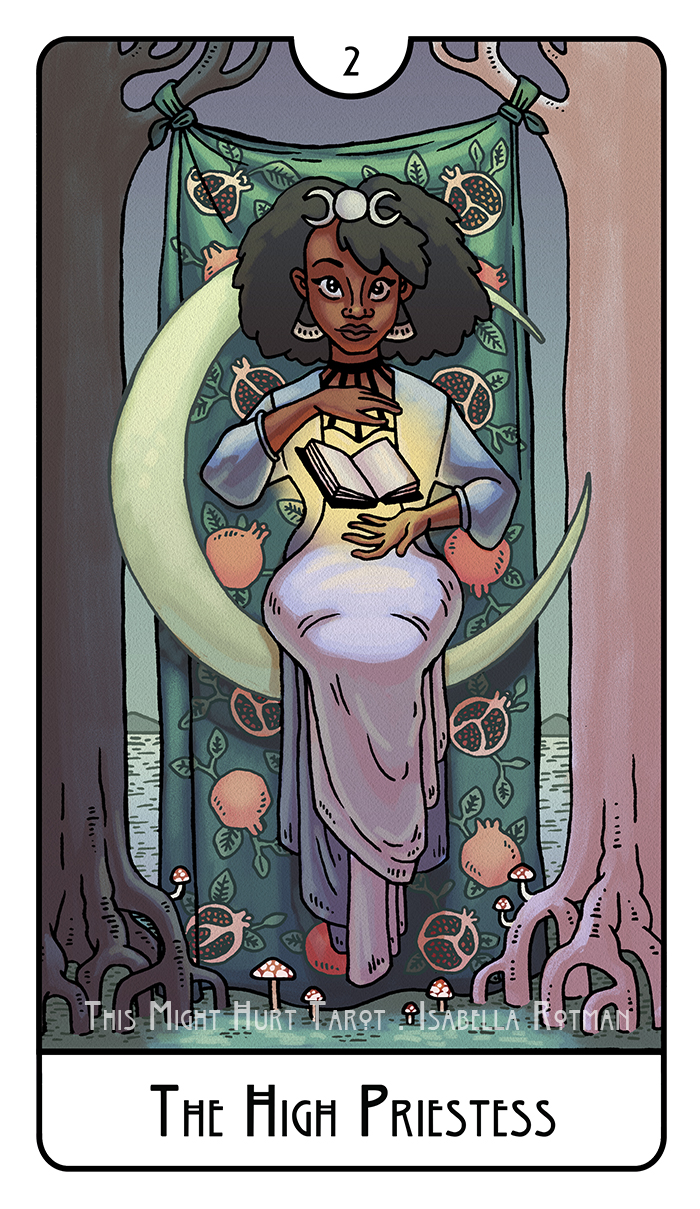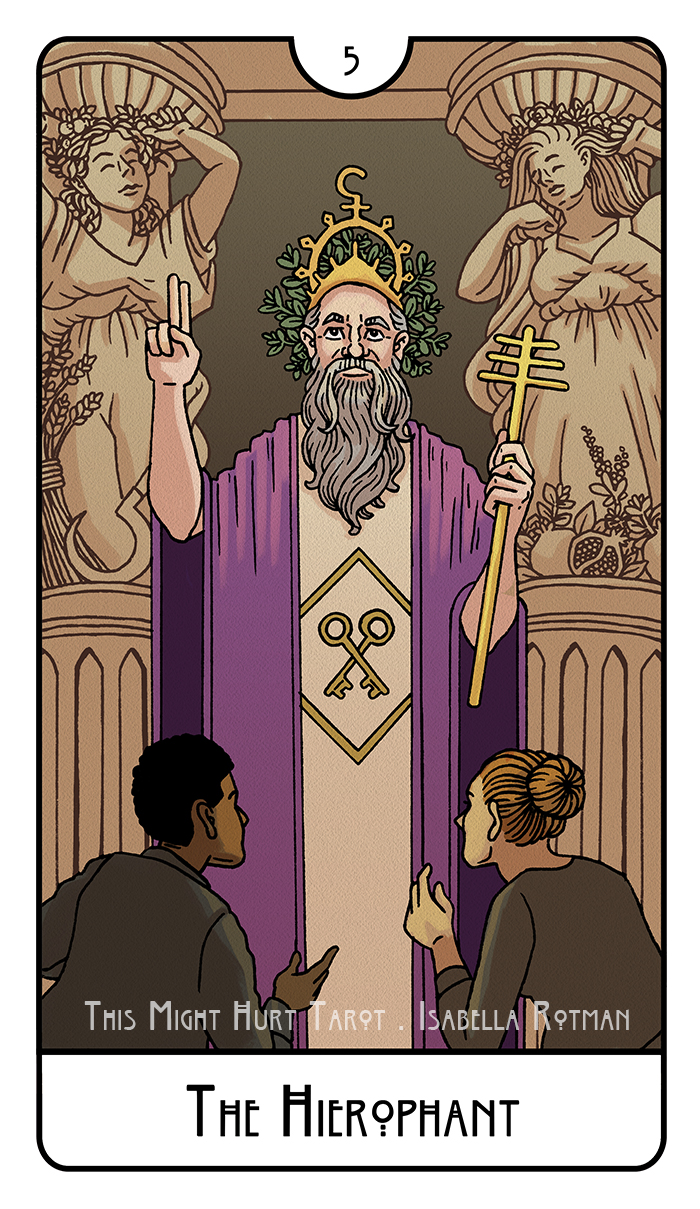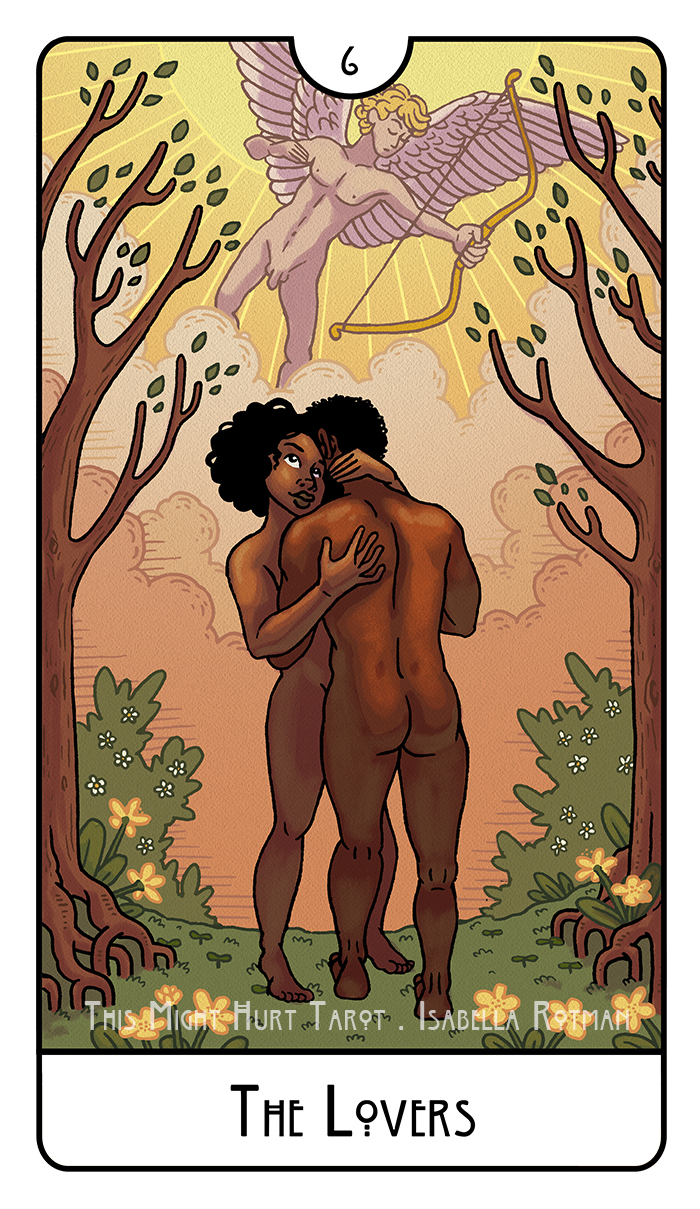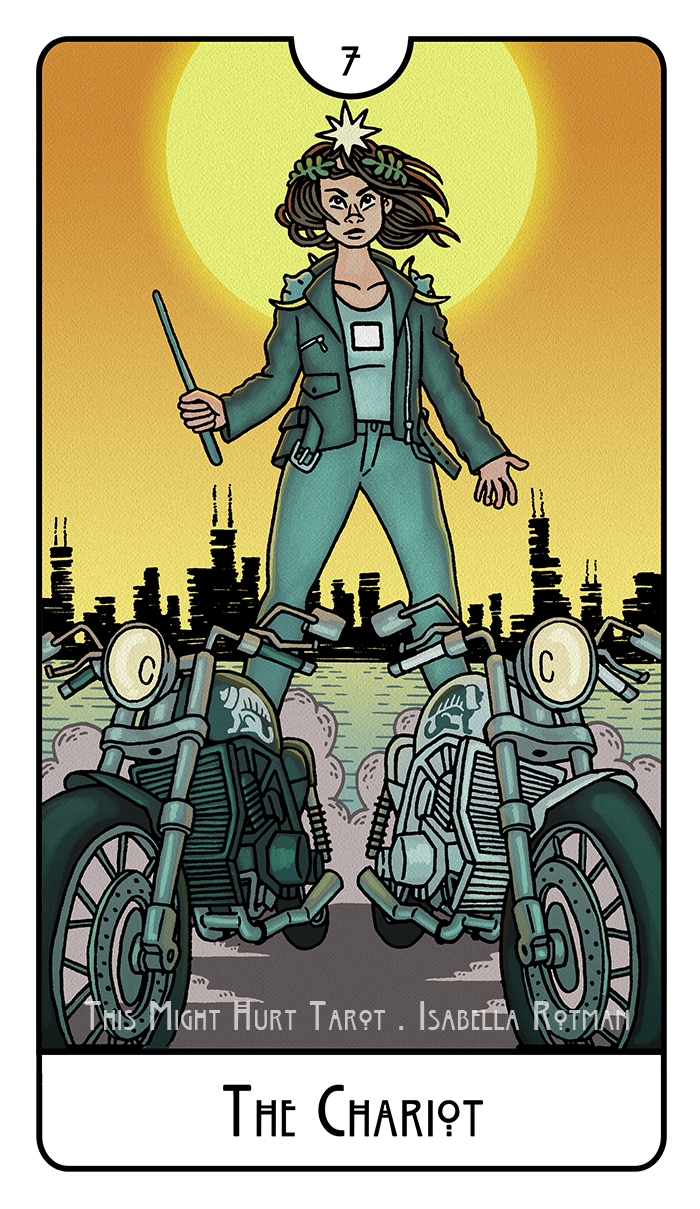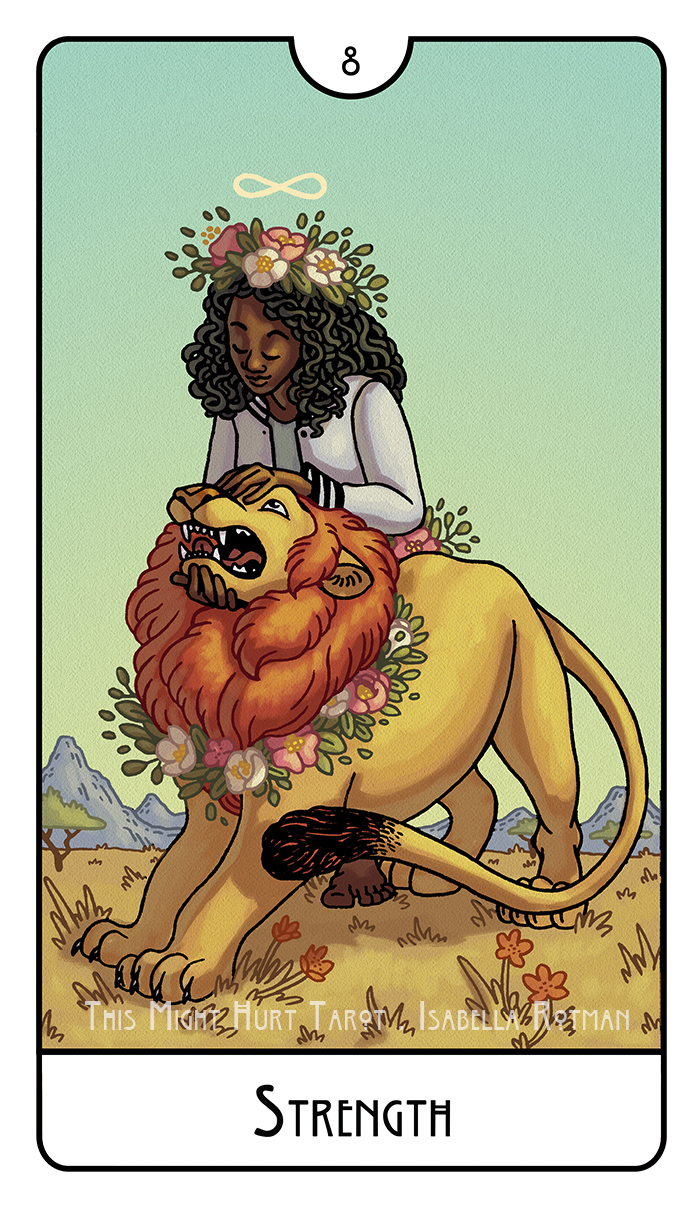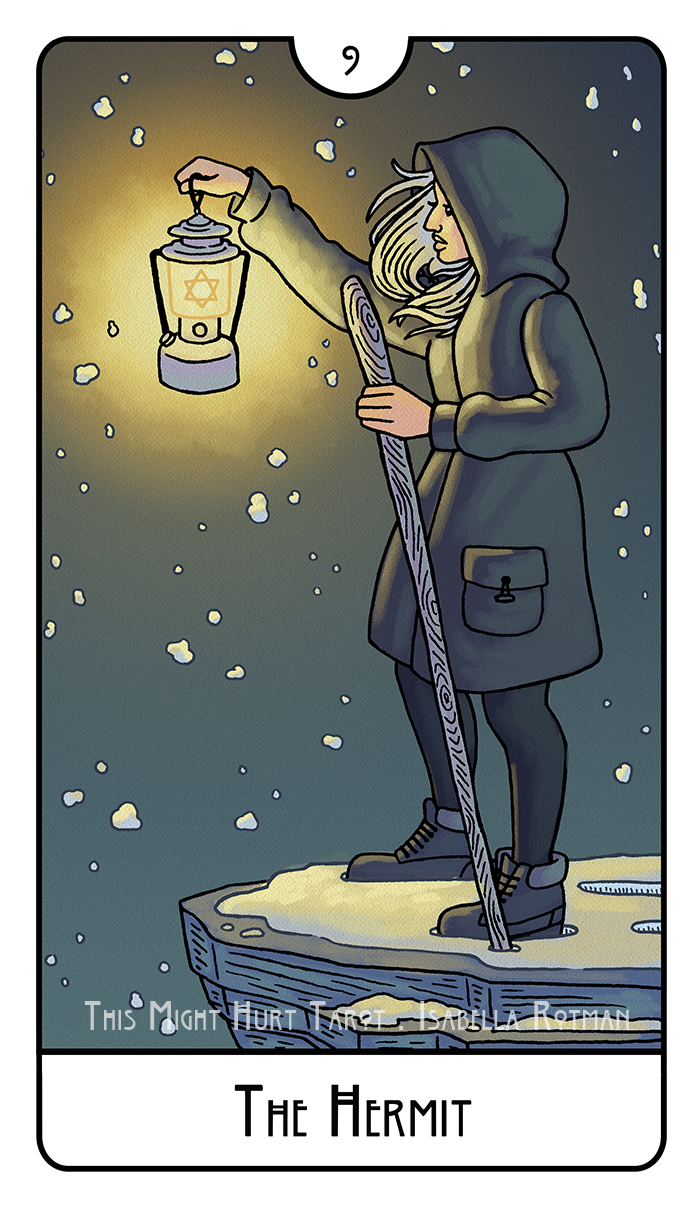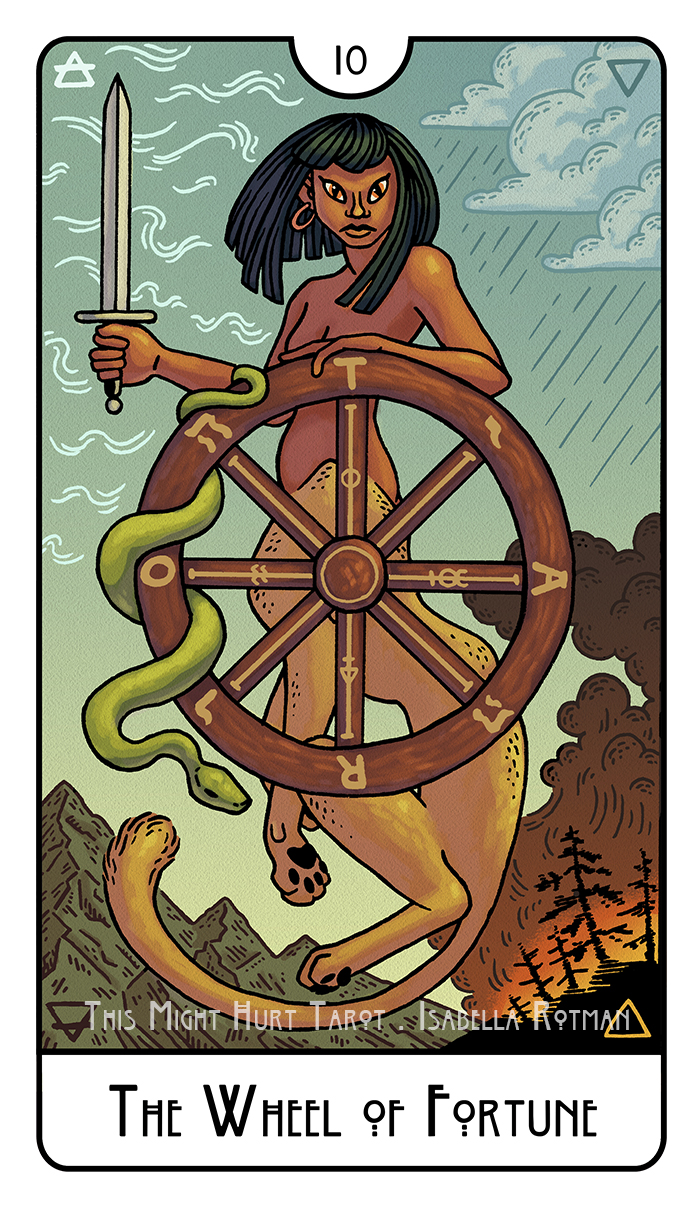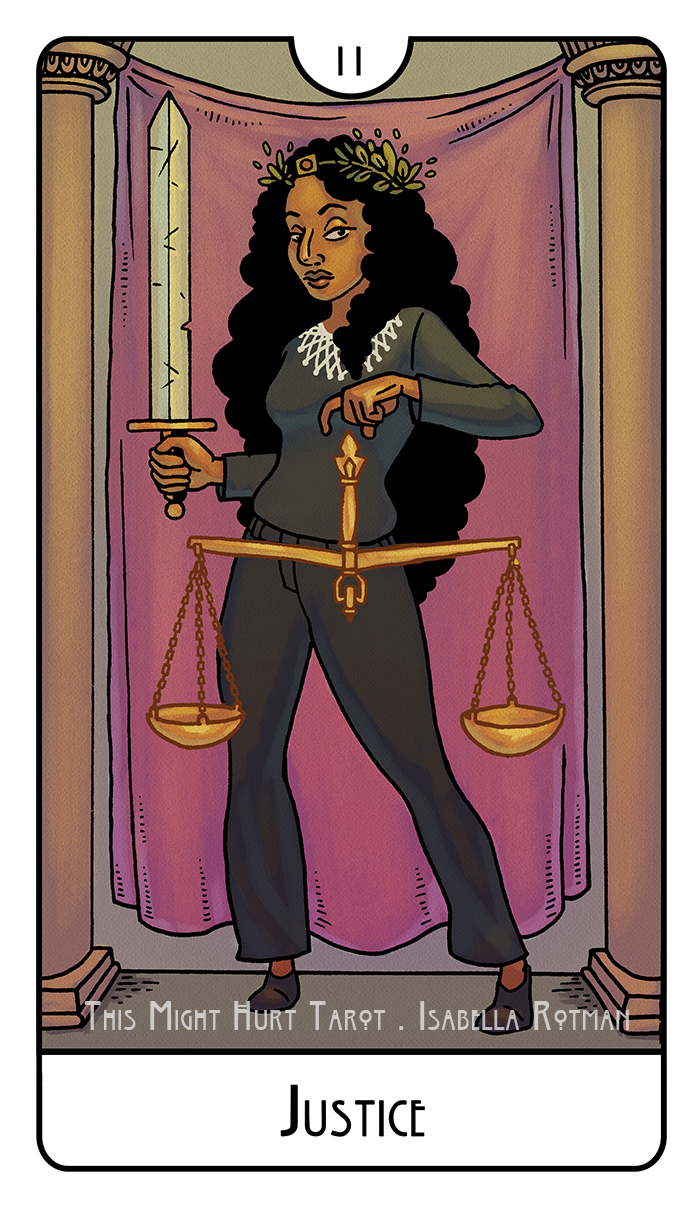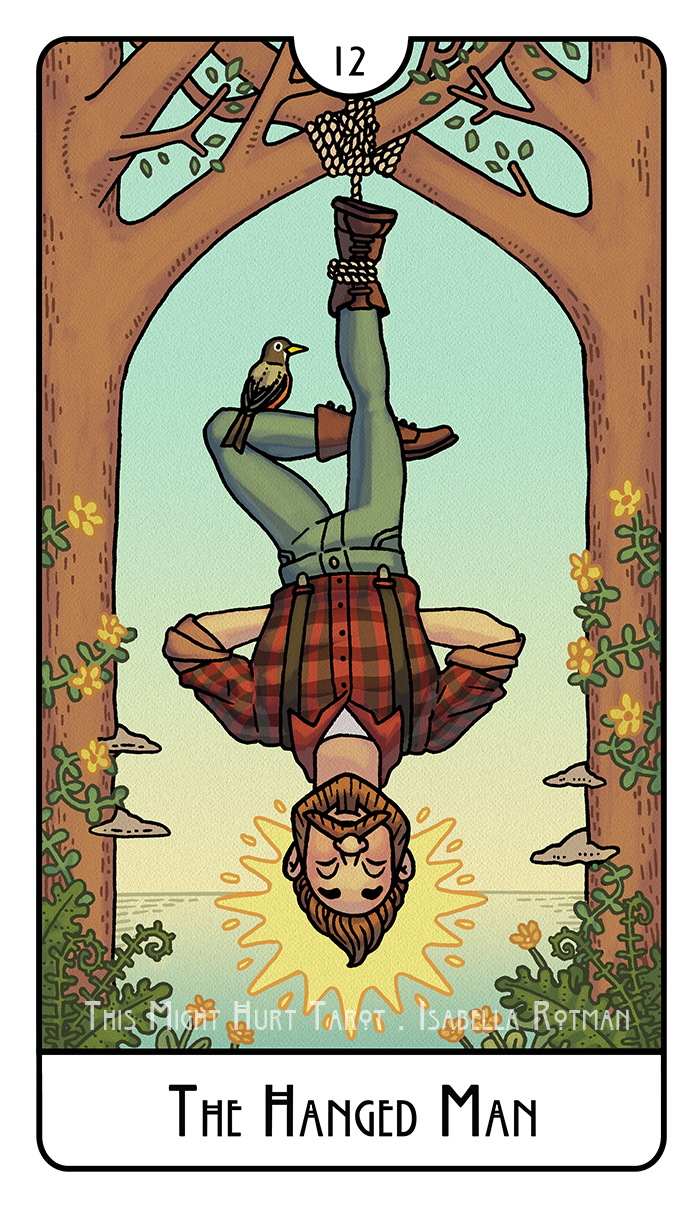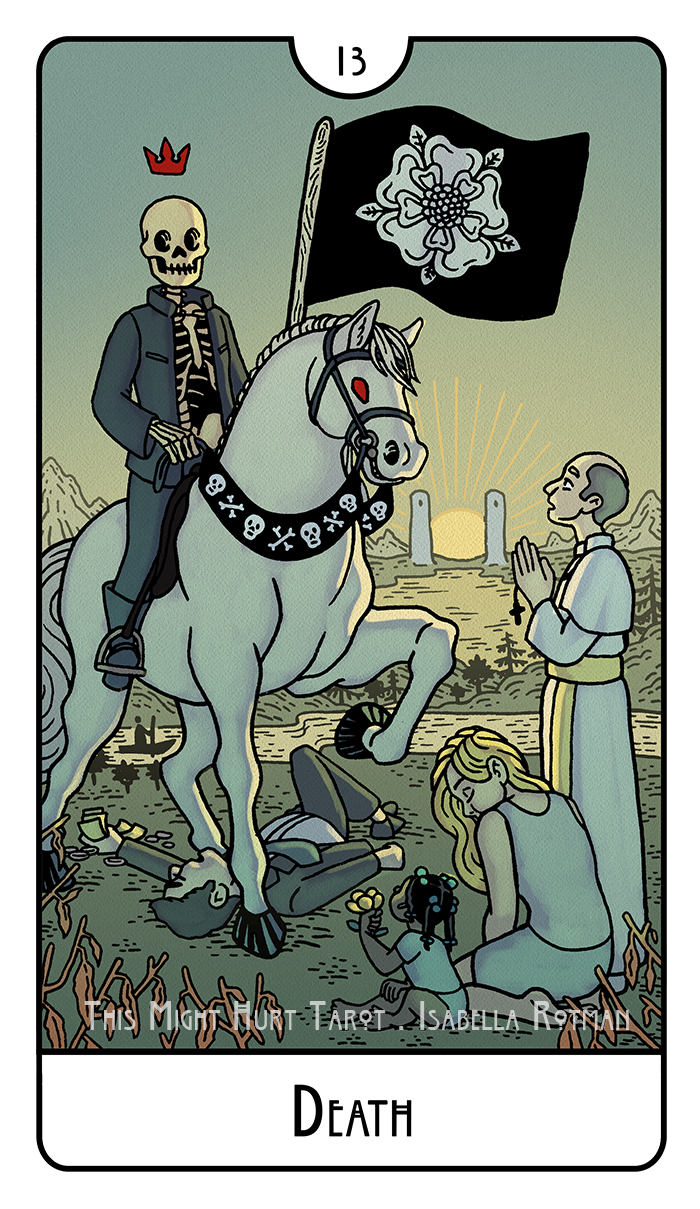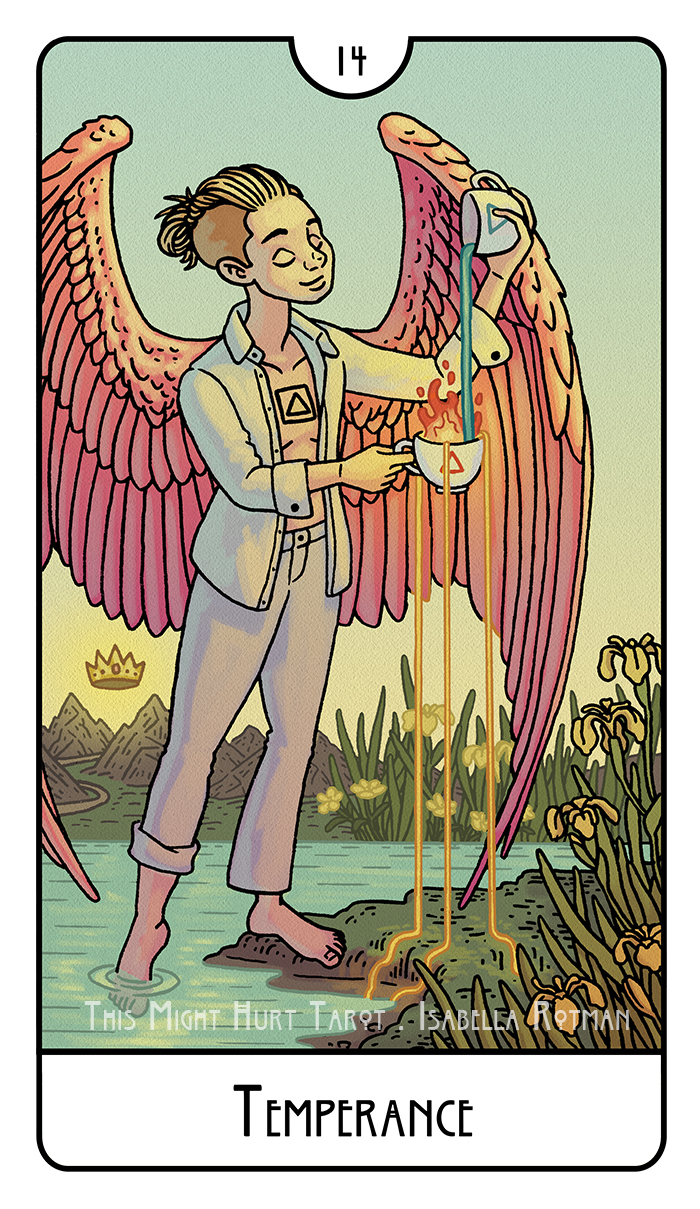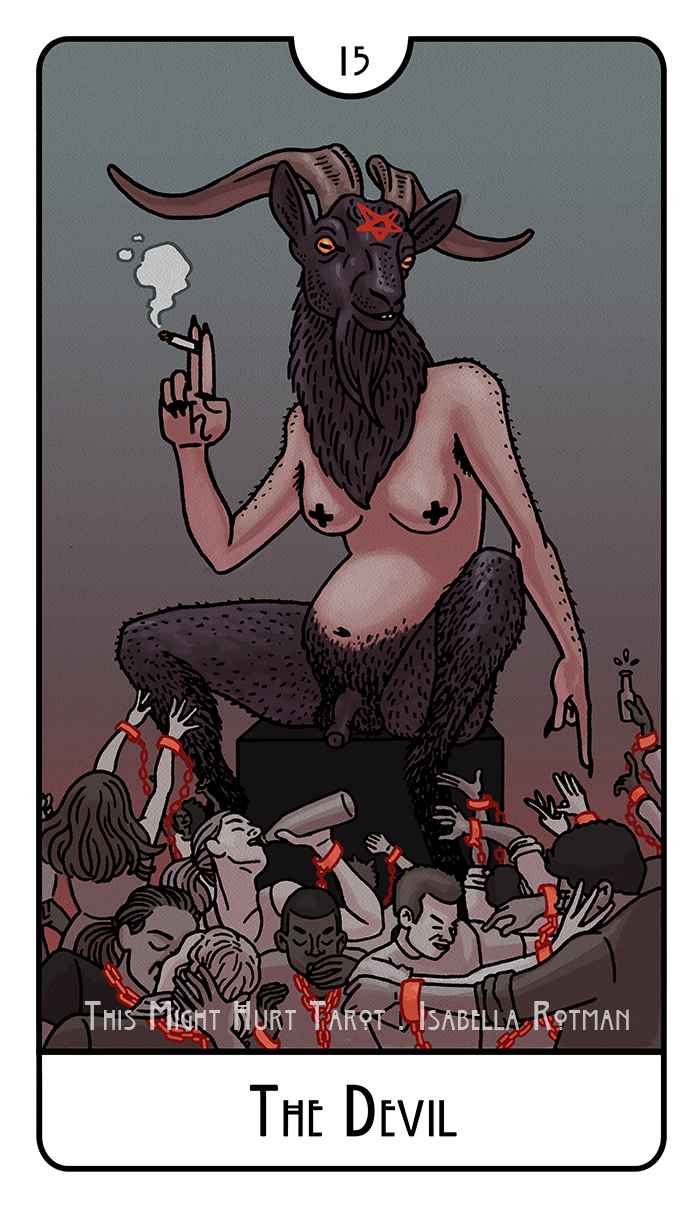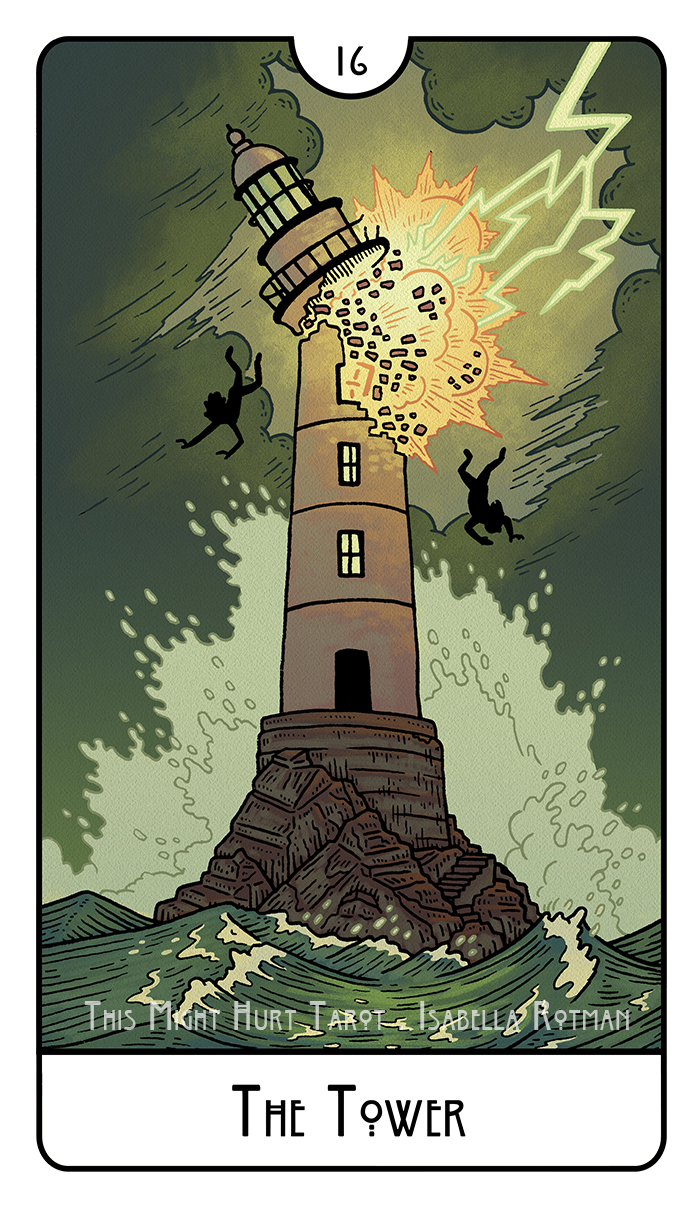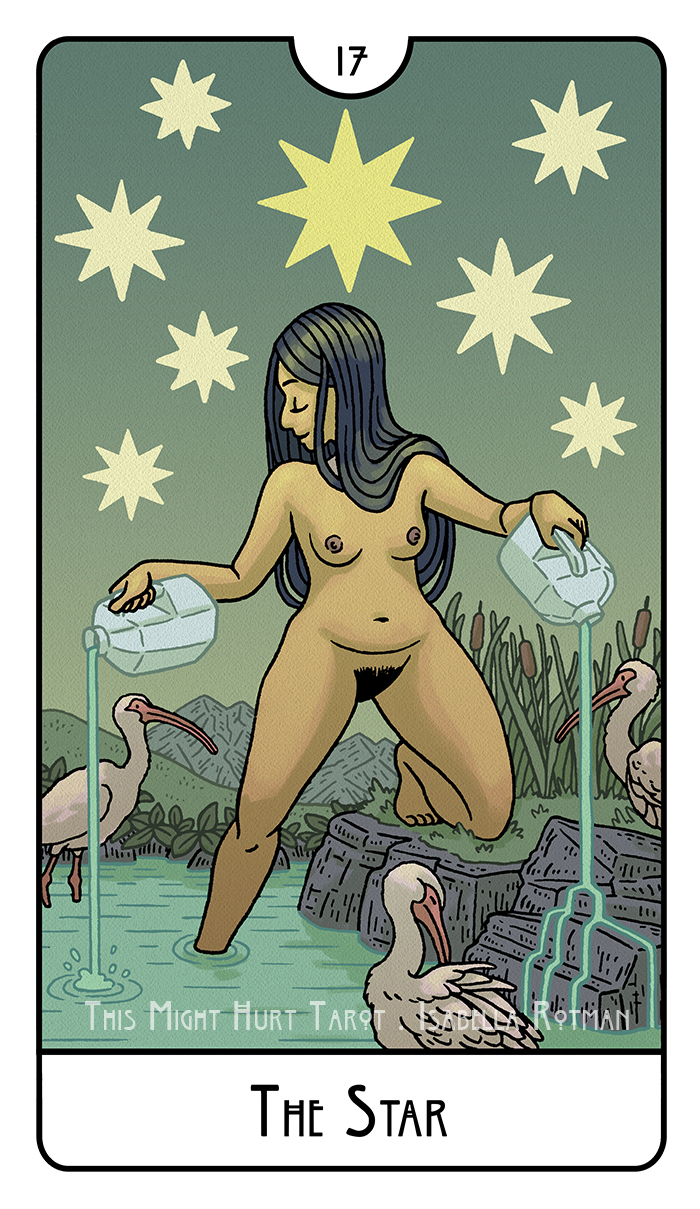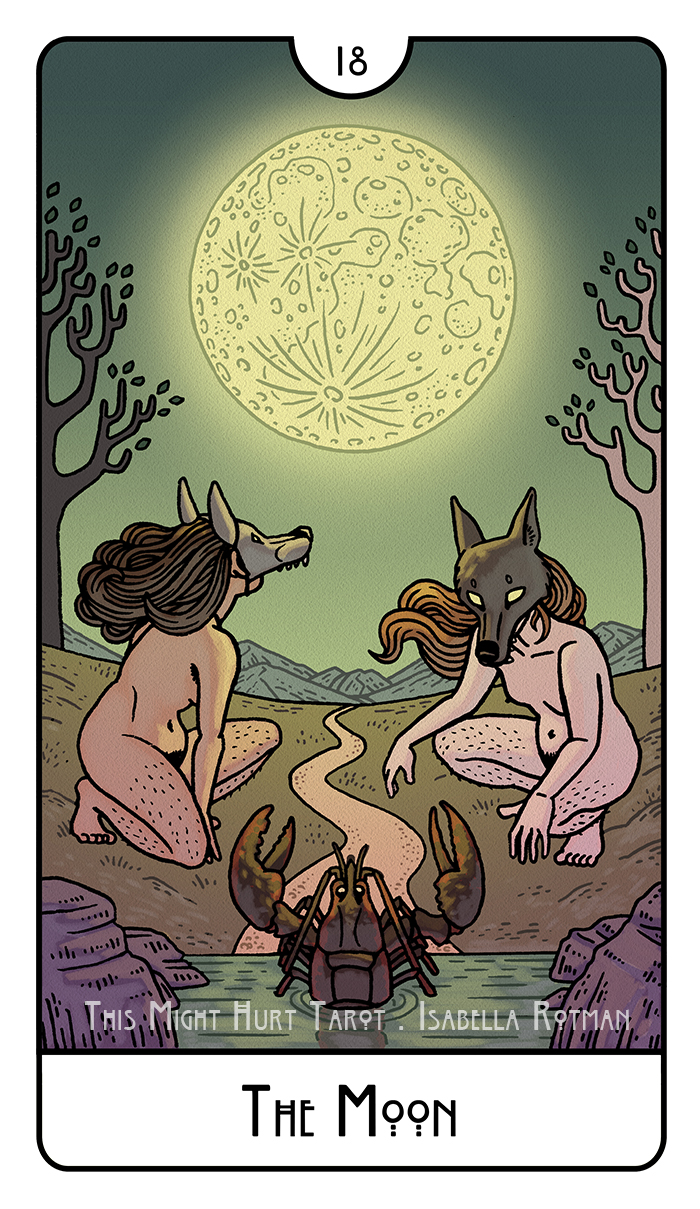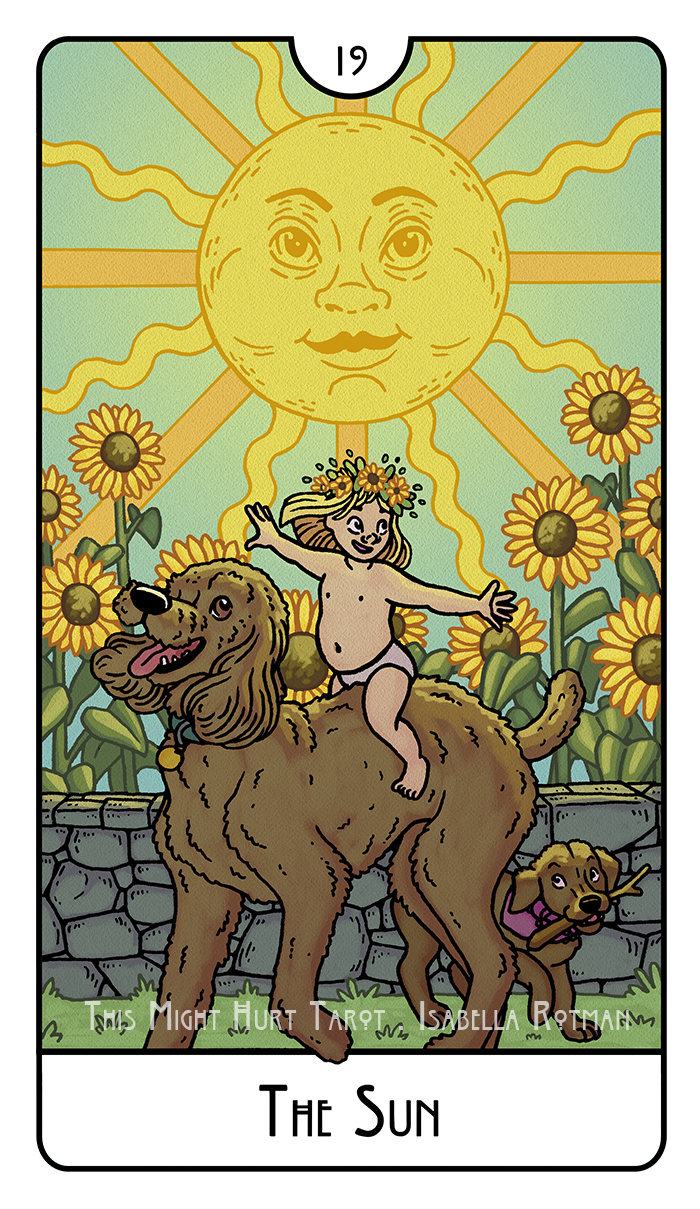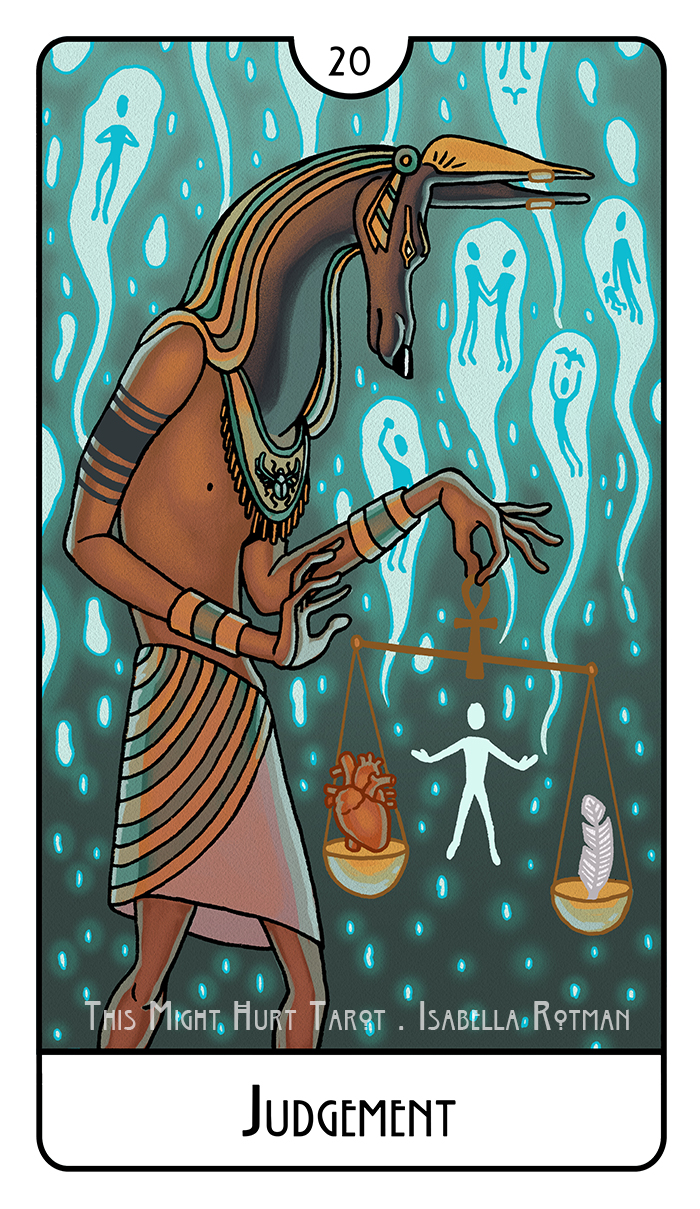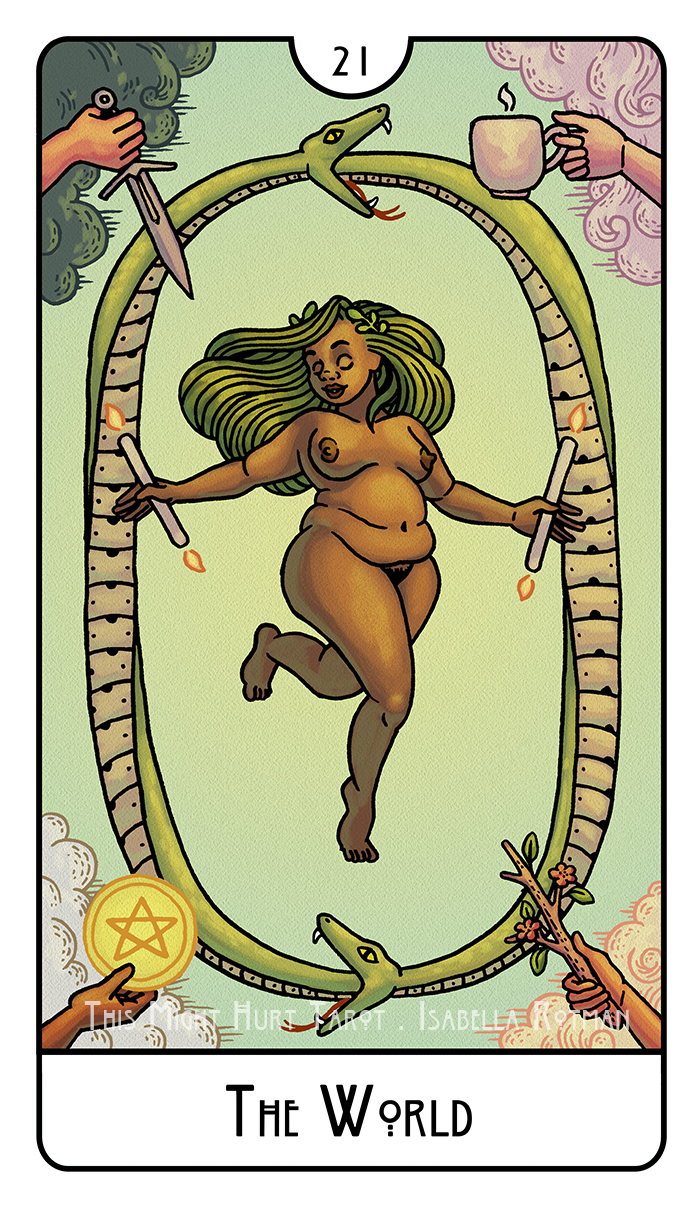The Major Arcana
The Major Arcana consists of 21 numbered cards and card 0, The Fool. The Major Arcana tells a story, a metaphor for the journey of life often referred to as ‘The Fool’s Journey.’ The Fool is fresh, new, and spontaneous: the card of beginnings. The cards of the Major Arcana depict various archetypes and universal themes that are encountered along the way. Some consider this journey a linear path, while others believe that any stage of the journey could happen at any time. In readings, Major Arcana cards deal with the most significant aspects of life. They are a big deal. When a Major Arcana card comes up, it is to be listened to.
The Fool bears the number 0 because he is the protagonist of the Major Arcana. Though the Fool is often considered an archetype, he is also a stand-in for the self as we progress down the different roads of life. The Major Arcana is often called the ‘Fool’s Journey’, and we can think of the Fool as being present in each card, experiencing the moment with us.
The Fool is about joyfully commencing an unknown journey, filled with the belief that although you don’t know where you are going, you’re headed in the right direction. This is a card of limitless possibility. In readings, the Fool urges you to throw caution to the wind and go on a wild adventure. Leave behind any fear of what might go wrong and throw yourself wholeheartedly into new experiences and growth.
What this means for you specifically can vary, but it has to involve taking a risk. Take a road trip, go on that date, get a dog. If it’s kind of brilliant and kind of insane at the same time, the Fool wants you to do it. Now is not a time to be still. You are wild, free, and excited about it. Jump, and trust the universe to catch you.
The Magician is a lightning rod. He holds a wand up to the sky, drawing energy down from the universe. His other hand points down, channeling the magic through his body to the earth below. The objects that represent the four suits float around him.
The Magician symbolizes the concept of manifestation. He draws energy from his surroundings and directs them to create or manipulate something. This card wants you to do the same. Channel all your obsessions, experience, excitement, and resources into whatever you’re working on. Really get in there and create something.
In readings, this card urges you to dream big. The Magician works with everything in his environment, gathering and focusing that energy into his creations. This is not the kind of energy one can keep up 24/7, and you may associate it with mania or obsessive tendencies. The key is to channel and release this energy in a productive way. To act is to direct your strength in specific directions. In her book Kitchen Table Tarot, Melissa Cynova says: “This card always reminds me that we are magic.” When The Magician appears, it adds potential to the entire reading. You are creative and powerful. Make it happen.
The High Priestess is a woman of mystery. The veil behind her is decorated with pomegranates, linking her to Persephone, the Greek goddess of spring and queen of the Underworld. She wears the triple moon symbol of the goddess on her head, linking her to femininity and lunar power. Behind the veil, we glimpse water, which in tarot symbolizes the collective unconscious. We are not forbidden from walking between the trees; we just don’t know how yet. The High Priestess holds a book, which many think of as the Torah, representing divine wisdom. In older decks (see Tarot of Marseille for an example), this card is labeled ‘The Papess’ meaning ‘female pope’.
The High Priestess is darkness, psychic power, and all the mysterious aspects of the divine feminine archetype. She has access to the collective unconscious. The Fool meets her early in his journey, before he is ready to understand what that means.
The High Priestess instructs you to turn inward. We are like the High Priestess every time we read the cards. Meditate, journal, make art, do anything that gets you in touch with that part of you that’s difficult to access consciously. This may look, in practicality, like stillness. You don’t have access to what is behind that veil yet. Take your time, look inward, and believe what you see.
The Empress sits surrounded by nature. Grain grows at her feet, linking her to the cycles of the earth, the harvest, and the Greek goddess Demeter. The sign of the Greek goddess Aphrodite is carved on the stump beneath her. Her crown bears twelve stars for the signs of the Zodiac. As Rachel Pollack poetically put it in Seventy-Eight Degrees of Wisdom: “she wears the universe as her jewelry.”
The Empress embodies the warmer aspects of the divine feminine. She is the nurturer. She is abundance. She represents gentleness and connection to nature, as well as both motherly and romantic love. Despite the fact that these qualities are clearly concepts attributed to women by men, and do not describe a multi-dimensional person, the Empress represents something quite grand. Whether we are discussing her as a mother, a lover, or, more abstractly, as connection to nature, there is one brilliant common thread: the Empress embodies a whole-hearted and unreserved approach to life.
In some readings, the Empress may specifically be a stand-in for your mother, a maternal figure in your life, or the mother of your children. In a more general sense, the Empress urges you to live as passionately as she does. Love your partners, all children, the earth, and yourself. Live passionately, kindly, and with unconstrained feeling. Context will determine what ‘living passionately’ means to you.
If the Empress is the maternal archetype of tarot, then the Emperor is the paternal figure. The ram links him to the Greek god Ares, but also signifies a strong, wild animal, domesticated. As the Empress is associated with nature, the Emperor represents the worlds built by men that are “married to nature,” as Pollack puts it. Behind him looms a painting of a mountain range, representing a solid foundation that is resistant to change. He symbolizes society and the laws that both bind and support it.
The natural world is chaotic and dangerous, and the structures built and enforced by society protect us from this chaos. At worst, the Emperor represents a constrictive hierarchy that many of us recognize as systemically racist, sexist, and classist. Progressively, we can choose to read the Emperor as a civilization that can be democratically shaped for the better.
In readings, the Emperor often represents your father or a father figure. He may also represent any authority figure who holds power over you: your boss, a cop, a soldier. On the other hand, the Emperor could represent a masculine romantic partner, especially if there is an imbalance in the relationship and this partner holds power over you. In situational readings, The Emperor urges you to stand up for yourself, assert leadership, create structure, and think through a situation rationally.
The Hierophant is a leader within an organized religion. Traditionally, the Hierophant is drawn as the Pope. The word ‘Hierophant’ (‘displayer of holy things’) refers to the chief of the Eleusinian cult in ancient Greece, best known for the Eleusinian Mysteries—a celebration of Persephone's return from the Underworld to her mother Demeter. I chose to draw my Hierophant card as one of these ancient Greek priests, backed by statues of Demeter and Persephone.
The Hierophant is a religious leader who is learned in a particular practice and passes that knowledge on to others. He can also symbolize how we are affected by these types of structures, such as internalized values taught to us by organizations and authority figures.
In readings, the Hierophant signifies a path that is laid out for you, a teacher figure, an organized religion, or education within a structure. At best, this card reminds you that there is much to be learned from community and a well-tested path. At worst, it can signify a desire to follow a leader and surrender responsibility. The Hierophant also asks you where you place your faith and why. Does that need to change?
Two figures embrace in a lush garden. Behind them is Eros, the Greek god of love, who was responsible for lighting the flame of love with arrows. We can see by his empty bow that this fire has already been lit. In the Rider-Waite-Smith deck, the winged figure is a biblical angel, and the garden is the Garden of Eden. In earlier decks, The Lovers card shows a choice between two potential romantic partners.
In the Fool’s Journey, The Lovers card asks what role love plays in our lives. One figure holds their partner, while the other looks up to the sky. In love, we often give up the part of the ego that isolates us, even if it is just temporary. While many interpret this card to be purely about romantic and sexual love, there are many types of love in this world. The Lovers can refer to any relationship in which love is felt intensely and deeply.
In readings, The Lovers represents the choices surrounding who you want to be and who you want to be with. The Lovers card often symbolizes a choice between what you desire and what you consider morally right.
Damn, she’s such a boss that she has not one, but TWO motorcycles! There’s absolutely no way she can move forward safely. She’s literally standing on the seats, and her hands aren’t even on the throttle. Despite this, the Chariot is about swift, confident movement. How does she do it?
A two-horse vehicle requires control over both driving forces. If the motorcycles move in the same direction, then the Chariot moves swiftly. If they do not, it can’t move at all. Throughout the Major Arcana (the Chariot, Hierophant, Lovers, and High Priestess), we see a triangular motif in which two side-by-side elements represent a duality and the top-center element represents a mediating force (e.g.: the pillars and veil behind the High Priestess). The Chariot’s mediating force is willpower.
If this card comes for you, then it’s time to find some balance between your badass self and your softer side. You have the ability to hold together contradictory forces and charge towards your goal. The Chariot is about victory through strength of will, after all. Give yourself a pep talk, put on your armor, and accelerate full throttle. Don’t feel confident? Fake it ‘til you do. As long as you are acting with determination and balance, you will surely succeed.
A woman calms a lion, holding it gently by the mouth. The lion represents our wild selves, usually smoothed over by the demands of living in a civilized world. The woman strokes him gently, not forcing or coercing his cooperation. The lion is ready to be tamed. They adore each other without trying to change one another.
You are both the girl and the lion. There are parts of you that are wild and parts of you that wish to control. When the Strength card appears, it is time to examine both aspects. Open the Pandora’s box of your personality. What do you see?
The golden trick of inner strength is love. The girl has boundless affection for the lion and all his wild tendencies. Have compassion for yourself. Do not demonize your demons. Instead, work to bring them under your conscious control. This card encourages you to find the fortitude to begin the difficult project of self-betterment, or to use the strength you already have to face external obstacles. Recognize your fears and insecurities, and the parts of yourself you aren’t too keen on. Gently accept them. Know you are strong.
The Hermit stands alone on a snowy mountaintop, holding aloft a lit lantern. In tarot, the night represents the unknown. The lantern is her inner guiding light. The six-pointed star within the lantern is a symbol that has been used by many cultures to represent the merging of dichometric entities. You may recognize it as the Star of David, or the Hindu Shatkona. Within the star, we see the alchemical symbols of all four elements merged.
The Hermit is surrounded by snow. In Modern Tarot, Michelle Tea describes snow as water (emotions) made tangible by cold air (logic). Many people who do not wish to be alone are loath to see the Hermit card. Try not to fight it. As is true with any card that you don’t want to see, resisting will only make it a bumpier ride.
This doesn’t mean you need to quit therapy, rent a cabin in the woods, and throw your cell phone in a river. You just need to withdraw enough to listen to yourself. You have everything that you need inside you, but you need the quiet to hear it. Let your inner voice be a lantern to guide you through the night.
There’s a lot of symbolism in this card. On the Wheel we see ‘TARO’ spelled out in Roman letters, creating the word ‘TAROT’ read in an endless circle. Counterclockwise, it reads ‘TORA’, referring to the Torah of Judaism, and thus to higher knowledge. The Hebrew letters on the Wheel’s rim are Yod, Heh, Vav, and Heh. They represent the name of God.
At the corners of the card we see the alchemical symbols of the four elements. The sphinx represents life’s riddles and knowledge. Despite all this complicated symbolism, the meaning of the Wheel of Fortune is actually quite straightforward: the Wheel turns.
The Wheel of Fortune is here to tell you that the situation is out of your control. The circumstances of life are always changing, and after this change, they will change again. There may not be any direct reason for your fortune or misfortune. In divinatory readings, the outcome is context-dependent. If things are great for you right now, it will not last forever. If life is difficult, chin up—it’s going to get better! The Wheel keeps turning. Few people like change, but it is important to make peace with the inherent impermanence of life. This too shall pass.
The tarot archetype of Justice derives from the Greek Titaness Themis, her Roman counterpart Justitia, and Themis’ daughter Dike. The modern symbol of many legal systems, ‘Lady Justice’ is an amalgamation of these three goddesses. The scales represent balancing both sides of a dispute, and the double-edged sword represents choice and the power that justice holds.
When the Justice card comes up for you, it is time to make choices. She urges you to make those decisions in a way that is true and fair. In positions regarding the past, this card may indicate that current circumstances are the ‘just’ result of past actions. Justice can also indicate that you (or someone else, perhaps someone who has wronged you) will not escape justice for wrongdoing.
In tarot, this card symbolizes a conceptual form of justice, dependent on seeing the truth about ourselves and our world. When the Justice card appears, it is telling you to do what is right. Act fairly, weigh both sides of the issue, and make a just decision, even if the ‘right’ choice is not the choice you would prefer.
The Hanged Man looks oddly serene for a person dangling upside down by his foot. Clearly, hanging inverted is uncomfortable, and yet he looks peaceful. How did he get in that position? What will he do now? The Hanged Man represents a period of discomfort in the interest of self-growth, and the enlightenment one can achieve by removing oneself from the world.
We can think of the Hanged Man’s ‘surrender’ as an active step, not a passive one. His pose strongly resembles that of a chrysalis. Something new is developing, and to allow it to come forth he must pause, withdraw, and let go. During their recovery from gender- affirming ‘top-surgery” (double mastectomy), my friend Quinn drew themself as the Hanged Man. They described the experience as “letting go and making a sacrifice for something deeply, clearly worth it.”
At its simplest, we can think of The Hanged Man as indicating a reversal of perspective. Turn the world upside down and what do you see? New perspectives, or even new solutions? In readings about conflict, problems, and disagreement, the Hanged Man instructs us to look at the issue from a different viewpoint. Accept your circumstances, allow your perspective to shift, and let go.
First of all, the Death card doesn’t mean you are going to die. It just means something is going to die, and that, despite your fear, you need to let that happen.
Death rides a white horse, arriving to strike down the four figures in the foreground, who represent the idea that death comes for us all, regardless of our status or the way we live our lives. Money will not save the rich man, prayer will not save the pious man, acceptance will not save the young woman, and innocence will not save the child. In Death we find a powerful metaphor for change. People, plants, and animals are always dying and being born. Death is required for life. If the Death card shows up in a ‘past position’ in your spread, it can represent grief, either for an actual death or a metaphorical one.
When this card comes for you, something in your life must die to make way for something new to come into being. It could be anything: a relationship, a career path, an aspiration. Change is unavoidable. Death shows us the moment when we allow a change to take place. Let it go, and know that a setting sun will always rise again.
An androgynous angel stands with one foot on land, symbolizing the world of matter, and one in water, symbolizing the unconscious world. The Temperance card in This Might Hurt Tarot borrows imagery from the B.O.T.A. (Builders of the Adytum) deck, and depicts the angel combining fire and water. The merging of fire and water, of multiple genders, and of water and land all represent the combination of opposites.
The Latin word ‘temperāre’ means to combine, compound or blend properly. The modern definition of ‘temperance’ is moderation and restraint. In these definitions we can see the multi-layered meaning of the Temperance card. Dichotomies are illusions. We can and should combine opposites within ourselves.
In readings, Temperance encourages you to do things in moderation and bring disparate elements of your life together. If this card comes for you at a time when your balance is all out of whack, then it’s a call-out. If it comes to you when you are trying to make a choice, consider that your options might not be polar opposites; if there is a middle path, take it. I once pulled the Temperance card in a reading for a friend who was deciding whether to pursue his career or try to start a family. The answer was: do both.
The Devil, depicted in the form of Baphomet (the Sabbatic Goat, an intersex magical deity used in modern Western mystic traditions, often in pop culture media as a visual stand-in for Satan), lords over a crowd of blissfully unaware party-goers. Focus on the chains. Each person in the crowd is engaged in destructive behaviors: sex, alcohol, drugs and conflict. Any of these behaviors might be fine in moderation, but the Devil is about ruinous extremes.
When the Devil card comes for you, it is time to ask yourself: what are you chained to? This is a card of addiction. You are tethered to some negative force bigger than yourself, be that alcohol, drugs, an obsession, or a toxic relationship with sex or a particular partner. You know those feelings of helplessness and shame that follow giving into a desire that did real harm, either to yourself or to someone else? That’s what the Devil is all about.
The Devil card can also indicate evils that are out of our control. We can be chained by unjust societies and abusive situations. More broadly, the Devil indicates that you are trapped by a lie. The power of the Devil is the belief that you have no alternatives... But you do. Once you have figured out what your Devil is, your job is to slip free of the chains.
The Tower is an omen of earth-shattering, catastrophic change. It is a lightning strike that tears down our walls, leaving nothing but rubble. The Tower itself is often a metaphorical structure of denial, a prison we construct when we do not live a life in alignment with our true selves. When this happens, pressure builds inside. It will find some way to explode. In other situations, the lightning strike of the Tower card may be an external event outside of your control.
There’s no way to stop the Tower from coming down. Perhaps you have been clinging to a job or relationship that is no longer serving you. Maybe you have been refusing to acknowledge an addiction or harmful lifestyle. In these situations, the Tower needs to come down. The pain of this moment won’t last forever, but you will always have the resulting freedom.
In other situations, the Tower is a catastrophic event that comes at you sideways. My friend Laura says: “Some things don't get an upside. Sometimes, the best you get is when you're on the other side—wiser, more compassionate, and more aware of your own resilience.” In both versions of the Tower, the process will be more painful the harder you cling to the crumbling walls. Reduce your pain by letting go.
A woman pours water from two bottles, standing with one foot on land and one in water. We see her not only accessing the unconscious, but adding her own creativity to the collective pool. She is nude and her posture is relaxed. She is free.
In the Fool’s Journey, the Star is the calm after the storm. At the beginning of the Major Arcana we peered behind the High Priestess’ veil, glimpsing the inaccessible waters of the unconscious. In the card that comes before the Star, the Tower is violently destroyed. The Tower often represents a self-imposed structure of denial. Through the destruction of the Tower the veil is torn away. The pool in the Star card is the same water that we saw behind the High Priestess’ veil.
In readings, the Star suggests a time of recovery after a traumatic event. This is also a card of inspiration. The birds that surround her are ibises, symbols of the Egyptian god Thoth, inventor of all arts. This is a time when creative expression will run through you freely. If you have a dream, the Star card says that now is the time to pursue it. Not only does she pour water back into the pool, but also onto land, signifying that she is also creating within the real world. Making art can be healing. The water poured on land flows back into the pool, replenishing her well of inspiration.
The Moon card does not align with my personal relationship with the moon. I absolutely love the moon; in tarot, the Moon is the unreliable light source in a nightmare. The trees in the background are the same trees on either side of the High Priestess. We are beyond the veil, seeing them from the other side. The wolf masks represent our animal selves. In The Pictorial Key to the Tarot, A.E. Waite describes the lobster as “the nameless and hideous tendency which is lower than the savage beast.” The lobster symbolizes our worst impulses or our most debilitating fears, rising from the unconscious mind.
The Moon can be a challenging card to read. “You are confused and unsure,” it says. Oh gee, tell me something I don’t know. The Moon is about intuition, but not the cute, fun kind. This is the kind of intuition that tells you “that man is dangerous” or “I am being lied to.”
It’s also about the unconscious and repressed memory. Think of the phases of the moon. Some part of her is always hidden, but as she waxes she reveals more of herself. Not knowing is terrifying, but incredible ideas and insights can come out of this space of darkness and unease. Trust that, over time, more information will be revealed to you. The sun always rises.
Oh, happy day! In the light of the Sun, everything is bright and joyful. Suddenly, isolation and day-to-day drudgery fall away, and you feel yourself as part of an interconnected, vibrant world. It makes you feel alive. You are blessedly whole, able to jubilantly experience the spiritual in the physical world. A child rides out of a garden in a burst of freedom. Fun fact: I drew this child as a younger version of myself, surrounded by the two dogs I grew up with. I can’t think of a better metaphor for happiness than those dogs.
When the Sun card comes for you, you must enjoy the day. Go outside, eat ice cream, lay in the grass, and think about how you are just a small part of a vast and glorious universe. As Pollack notes: “Enlightenment is an experience, not an idea.” The Sun card is a picture of that experience. It is important to remember that the Sun depicts a moment, not a perpetual state. Constant sun will make a desert of a verdant garden. Human beings are built to oscillate between modes of being.
What the Sun signifies is seeing the world with a sense of wonder. Have you ever looked at something simple and found that it made you smile with delight? That is what the Sun card is all about.
This is the card for which I deviated the most from the Rider-Waite-Smith imagery, which depicts the rapture, complete with an angel blowing a trumpet to beckon all good Christians out of their graves and into heaven.
Instead, I chose to draw Anubis, the jackal-headed Egyptian god of the dead. The ancient Egyptian understanding of divine judgment involved reciting the ‘Negative Confessions’: a list of 42 sins that the soul had not committed. After this, Anubis would weigh the heart of the recently deceased against the feather of truth. If the heart was lighter than the feather, the soul would ascend to the afterlife. If the heart was heavier, the heart and soul would be devoured and destroyed. Yikes.
But we are not dead yet. Thus, the reckoning is not external—it is an invitation to look objectively back on your life and your choices. Who have you been, and who do you want to be? The Judgement card is a big deal. It is an opportunity to learn from your past, to answer a calling, to intentionally become something new. Maybe you like what you see and don’t wish to change. This is also okay, as long as it is a decision, not stagnation. You are both Anubis and the heart; you judge yourself. Who do you want to be?
Finally, the World! This is the last card in the Fool’s Journey. At the corners we see the four suits, presented to us as they are in the Aces. The wreath is an ouroboros, a symbol with ends that are not actually ends, because everything circles back again. The woman floating in the center of it all is nude and joyful. She dances. She loves herself, and she has no shame. She is full.
We could call the World so many things: enlightenment, the end of a cycle, transcendence. I prefer to think of it as self-actualization. It is about your inner self coming into alignment with how you live your life. It is not about banishing the parts of yourself that you don’t like, but learning to love them to become a complete and whole you. It is also about accepting and seeing yourself in connection with the universe at large.
In readings, it may be difficult to hold on to the grandness of the World, which seems to slip between your fingers when held up against day-to-day reality. In the most mundane sense, the World could mean that a cycle will be completed in achievement and satisfaction. I prefer to think of the World in a more glorious sense: you will live an extraordinary life.
